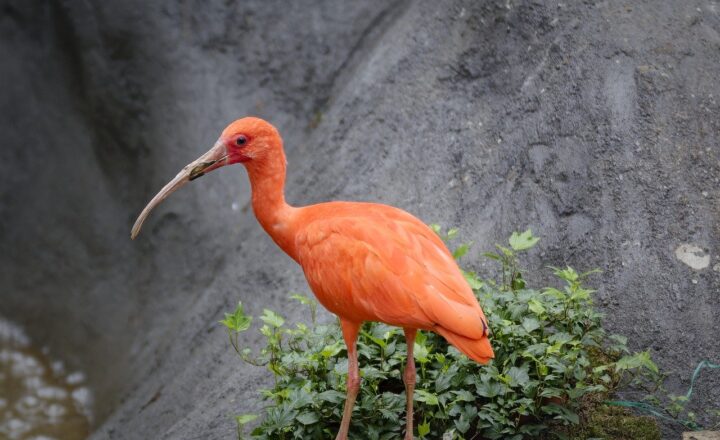How Evolution Has Produced Some of the Strangest Creatures on Earth
November 17, 2024

Evolution is a powerful force that shapes life on our planet, giving rise to a stunning variety of species, many of which are incredibly strange and fascinating. From the peculiar appendages of the axolotl to the iridescent feathers of the peacock, the natural world is filled with oddities that challenge our understanding of what constitutes life. This article delves into the reasons behind these unusual adaptations and the intricate processes of evolution that have produced some of the strangest creatures on earth.
1. The Mechanisms of Evolution
To understand how evolution produces strange creatures, we must first grasp the basic mechanisms behind it. Evolution is driven by four key processes:
- Mutation: Random genetic mutations occur in organisms, leading to variations in traits. These mutations can happen due to environmental factors or errors during DNA replication.
- Natural Selection: Individuals with advantageous traits are more likely to survive and reproduce, passing these traits to the next generation. Over time, this can lead to the prevalence of these traits within a population.
- Genetic Drift: Random changes in gene frequencies within a population can lead to significant evolutionary changes, especially in small populations where chance events can have a larger impact.
- Gene Flow: The movement of genes between populations can introduce new genetic material, increasing diversity and potentially leading to new adaptations.
These processes interact in complex ways, leading to the emergence of species with fascinating adaptations that can appear bizarre or outlandish compared to the more familiar life forms.
2. Case Studies of Strange Creatures
Let’s explore some of the most extraordinary creatures that showcase the marvels of evolution:
The Axolotl
The axolotl, a type of salamander, defies the traditional life cycle of amphibians. Unlike most salamanders, which undergo metamorphosis, axolotls retain their larval features into adulthood, a phenomenon known as neoteny. This creature’s ability to regenerate lost limbs and even parts of its heart and brain has made it a subject of intense scientific study.
The Naked Mole Rat
Living in the harsh underground environments of East Africa, the naked mole rat is a remarkable example of social living. These creatures are virtually hairless, have a very long lifespan for their size, and show resistance to cancer. Their unique social structure allows them to live in colonies where only a single female reproduces, much like bees or ants.
The Platypus
The platypus is one of the most extraordinary mammals. With a bill like a duck, webbed feet, and the ability to lay eggs, the platypus blurs the lines between mammalian characteristics. It also possesses venom, making it one of the few venomous mammals. The evolutionary lineage of the platypus offers important insights into the development of mammals.
The Pistol Shrimp
Known for its impressive claw, the pistol shrimp can snap its claw so quickly that it creates a cavitation bubble that, when it collapses, produces a shockwave capable of stunning prey. This remarkable adaptation not only aids in hunting but also serves as a means of communication with its fellow shrimp.
3. Evolutionary Pressures Behind Odd Adaptations
Unusual adaptations often arise as a response to environmental pressures. Here are some of the key factors that contribute to the development of these strange traits:
- Survival Needs: Creatures may evolve odd features to enhance their survival chances. For example, the bright colors of certain frogs serve as a warning to predators about their toxicity.
- Reproductive Advantages: Strange traits may evolve to attract mates. The extravagant tail of a peacock, for instance, is a result of sexual selection, where females prefer mates with larger and more colorful tails.
- Resource Availability: In environments where food is scarce, some animals have developed unique feeding adaptations. The long, sticky tongue of the chameleon allows it to capture prey from a distance, while the proboscis of certain insects enables them to feed on nectar deep within flowers.
As environmental conditions change, species continue to adapt, leading to an astonishing array of forms and functions that may seem outlandish to the human observer.
4. Human Perspective on Strange Creatures
Humans have often perceived strange creatures through a lens of curiosity and fear. This fascination has prompted countless studies, documentaries, and fictional portrayals. However, as science has progressed, many previously misunderstood animals have revealed their importance in ecosystems and their roles as indicators of environmental health.
Conservation efforts for endangered oddities are gaining traction as people recognize their critical roles in biodiversity and ecosystem balance. The protection of unique species like the axolotl is crucial, not only for preserving biodiversity but also for potential medical advancements tied to their regenerative properties.
Conclusion
The strange creatures on our planet serve as a testament to the incredible diversity of life shaped by evolution. Each unusual adaptation tells a story of survival, reproduction, and the pressures of the environment. As we continue to explore and understand these organisms, we gain insights into evolutionary processes, the interconnectedness of life forms, and the importance of conserving our planet’s unique biodiversity.
By appreciating the quirks of evolution, we not only expand our knowledge of biology but also enhance our perspective on the intricate web of life that sustains us all.








